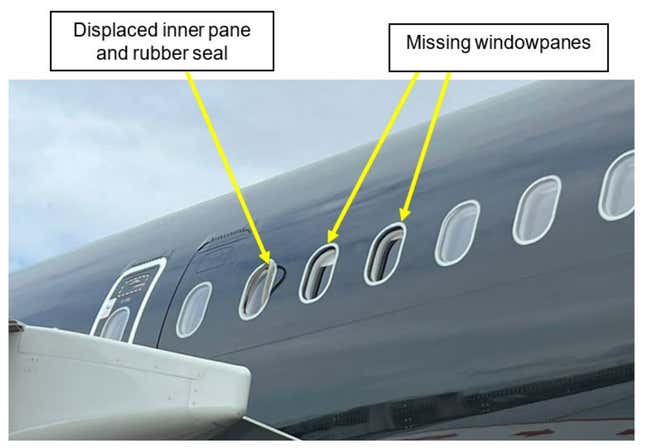The flight crew of an Airbus A321 was forced to return to London Stansted Airport after taking off when it was discovered that the airliner was missing two windows. The flight was being operated by charter carrier Titan Airways and headed across the Atlantic to Orlando, Florida. Britain’s Air Accidents Investigations Branch noted that the aircraft was under floodlights for nearly ten hours for a film shoot the day before. The hot lighting warped and distorted the window assemblies mounted to the fuselage.
The A321 was sparsely occupied during the October 7, 2023 flight. There were 11 crew members onboard: three pilots, an engineer, a loadmaster and six cabin crew. All nine passengers on the plane were employees of TCS World Travel, the luxury tour company chartering the aircraft. The passengers were seated together in the middle of the lengthy cabin, but they noted that the plane was noisier and colder than they were used to.
When the seatbelt signs were turned off as the aircraft soared over 10,000, the loadmaster got up and walked toward the back of the cabin. That’s when he noticed the damage. The AAIB report reads:
“He noticed the increased cabin noise as he approached the overwing exits and his attention was drawn to a cabin window on the left side of the aircraft. He observed that the window seal was flapping in the airflow and the windowpane appeared to have slipped down. He described the cabin noise as ‘loud enough to damage your hearing,’”

The flight crew stopped their ascent at 14,500 feet after they were informed of the situation. The engineer and relief pilot assessed the damage of one window, and the decision was made to return to Stansted Airport without any pressurization issues.
The crew didn’t realize that the outer panes on two windows were gone and a third window was coming loose until they were on the ground. On the third window, the rubber seal between the window pane and the fuselage had melted and was peeling out of the frame.
The AAIB is further investigating the incident to prevent it from happening again, but the solution seems simple. Don’t fly an aircraft that has been under intense lighting without checking that it’s safe first.